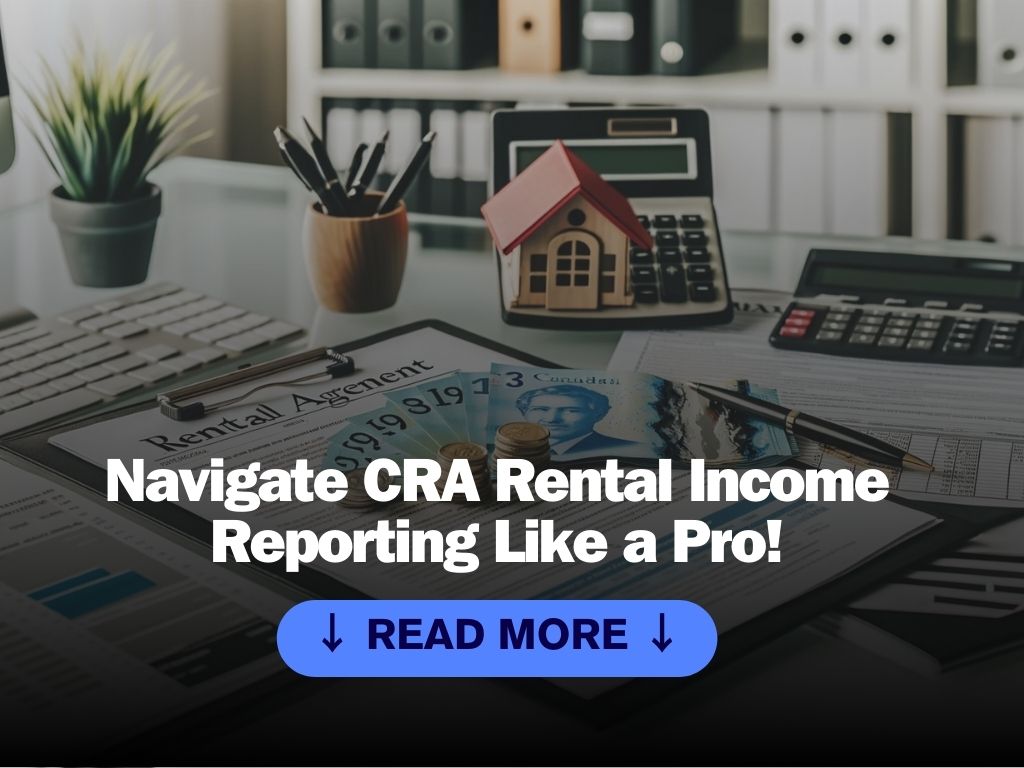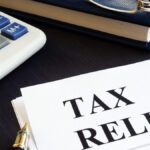Key Takeaway: If you rent out a property in Canada, you need to report your rental income to the Canada Revenue Agency (CRA) and pay taxes on it. Failing to do so can result in hefty fines, interest charges, and even criminal prosecution. In this article, you’ll learn how the CRA tracks rental income, what expenses you can deduct, and how to avoid common mistakes.
Do you own a property that you rent out to tenants? If so, you may be wondering how to report your rental income to the CRA and what expenses you can deduct. You may also be worried about how the CRA tracks rental income and what penalties you could face if you don’t report it correctly.
In this article, we’ll answer all these questions and more. We’ll explain how the CRA defines rental income, how it obtains information about it, and how it audits rental property owners. We’ll also show you how to calculate your rental income or loss, what expenses you can deduct, and how to fill out Form T776, Statement of Real Estate Rentals. Finally, we’ll share some tips on how to avoid common mistakes and reduce your tax liability.

What is Rental Income According to the CRA?
The CRA defines rental income as the money or value received for renting out a property that you own⁵. This includes income from houses, apartments, condominiums, and other properties. The CRA requires you to report rental income on your tax returns. This applies to renting out a portion of your home or an entire property. Even if you rent out your property for a short time, such as through Airbnb, it is still considered rental income and must be reported⁶.
Not reporting rental income can have serious consequences. You could face penalties, interest charges, and even criminal prosecution. The CRA can also reassess your tax returns for up to three years after the original filing date and make adjustments to your income, deductions, and credits. This could result in a higher tax bill and a lower refund.
How Does the CRA Track Rental Income?
The CRA obtains information about rental income through various methods, including:
- Rent credits for tenants: Many provinces have rent credits for tenants, which require the tenant to provide details of the property they are renting and the landlord. For example, in Ontario, this is done through the Ontario Energy and Property Tax Credit (OEPTC). In Quebec, it is done through the Solidarity Tax Credit. The CRA can use this information to verify if the landlord is reporting the rental income correctly.
- Property tax rolls: If you own multiple properties and therefore have multiple property tax rolls under the same name, the CRA may request you to provide details relating to the use of each property. If the CRA finds out that you are renting out a property but not reporting the income, you could face penalties and interest.
- Rental statements: In some cases, you may receive rental statements from property management companies or rental platforms, such as Airbnb. These statements are reported to the CRA as income, so the CRA can match them with your tax returns and check for discrepancies.
- Audits: The CRA conducts random or targeted audits throughout the year. The CRA may select you for an audit based on various factors, such as your income level, your industry, your location, or your previous tax history. The CRA may also exchange information with other government agencies, such as land registry offices or municipal authorities, to track rental income and ensure compliance.
How to Calculate Your Rental Income or Loss
To calculate your rental income or loss, you need to subtract your rental expenses from your gross rental income. Your gross rental income is the total amount of money you received from renting out your property, including rent payments, security deposits, and additional fees. Your rental expenses are the costs you incurred to earn your rental income, such as mortgage interest, property taxes, insurance, repairs, and maintenance.
You can deduct your rental expenses from your rental income only if they are reasonable and related to your rental activity. You cannot deduct personal expenses, such as mortgage principal, capital expenses, or expenses for renting below fair market value. You also cannot deduct prepaid expenses, such as insurance premiums or property taxes, in the year you paid them. You can only deduct the portion that relates to the current tax year and carry forward the rest to the next year.
To report your rental income or loss, you need to fill out Form T776, Statement of Real Estate Rentals. This form helps you calculate your net income or loss from your rental property and report it on your tax return. You need to fill out a separate form for each rental property you own. You also need to keep
How to Deduct Your Rental Expenses
You can deduct your rental expenses from your rental income if they are reasonable and related to your rental activity. However, not all expenses are deductible in the same way. Some expenses are considered current expenses, while others are considered capital expenses.
Current expenses are the ongoing costs of running and maintaining your rental property. They include:
- Mortgage interest
- Property taxes
- Insurance
- Utilities
- Repairs and maintenance
- Advertising
- Legal fees
- Accounting fees
- Management fees
- Travel expenses
You can deduct the full amount of your current expenses in the year you incur them, as long as they are not personal or capital in nature.
Capital expenses are the costs of buying or improving your rental property. They include:
- Purchase price
- Land transfer tax
- Legal fees
- Renovations
- Additions
- Furniture
- Appliances
- Equipment
You cannot deduct the full amount of your capital expenses in the year you incur them. Instead, you have to spread them over several years using the capital cost allowance (CCA) method. CCA is a way of depreciating your capital assets based on their useful life and prescribed rates. You can claim CCA on your rental property and its contents, such as furniture and appliances, but not on the land.
To claim CCA, you need to fill out Form T776, Part B, Area A, and Area C. You also need to keep track of the undepreciated capital cost (UCC) of each class of assets. The UCC is the remaining value of your assets after deducting the CCA. You can use the CCA calculator on the CRA website to help you with this process.
Claiming CCA has some advantages and disadvantages. On one hand, it can reduce your taxable income and lower your tax bill. On the other hand, it can increase your capital gains and recapture when you sell your property. Recapture is the amount of CCA that you have to add back to your income when you sell your property for more than its UCC. Capital gains are the profits you make when you sell your property for more than its adjusted cost base (ACB). The ACB is the original purchase price plus any capital expenses minus any CCA claimed.
Therefore, you should carefully consider whether to claim CCA or not. You may want to consult a tax professional to help you make the best decision for your situation.
How to Fill Out Form T776, Statement of Real Estate Rentals
Form T776 is the form you need to use to report your rental income or loss on your tax return. You need to fill out a separate form for each rental property you own. You can find the form and the instructions on the CRA website.
Here are the main steps to fill out Form T776:
- Step 1: Enter your personal information, such as your name, address, and social insurance number, in Part A.
- Step 2: Enter the address and description of your rental property in Part B. Indicate whether you are renting out the whole property or a part of it, and whether you are claiming CCA or not.
- Step 3: Enter your gross rental income in Part C, line 16000. This is the total amount of money you received from renting out your property, including rent payments, security deposits, and additional fees.
- Step 4: Enter your rental expenses in Part C, lines 16001 to 16019. These are the current expenses you incurred to earn your rental income, such as mortgage interest, property taxes, insurance, repairs, and maintenance. Make sure you have receipts and invoices to support your claims.
- Step 5: Calculate your net income or loss from your rental property in Part C, line 16020. This is the difference between your gross rental income and your rental expenses. If the result is positive, you have a net income. If the result is negative, you have a net loss.
- Step 6: Enter your CCA claim in Part C, line 16021. This is the amount of CCA you are claiming on your rental property and its contents, such as furniture and appliances. You need to fill out Part B, Area A, and Area C to calculate your CCA claim. You also need to keep track of the UCC of each class of assets.
- Step 7: Calculate your net income or loss from your rental property after CCA in Part C, line 16022. This is the difference between your net income or loss from your rental property and your CCA claim. If the result is positive, you have a net income. If the result is negative, you have a net loss.
- Step 8: Transfer your net income or loss from your rental property after CCA to your tax return. If you have a net income, enter it on line 12600 of your T1 return. If you have a net loss, enter it on line 12700 of your T1 return.
How to Avoid Common Mistakes and Reduce Your Tax Liability
Reporting your rental income and expenses can be complicated and confusing. You may make some mistakes that could cost you money or get you in trouble with the CRA. Here are some tips on how to avoid common mistakes and reduce your tax liability:
- Keep accurate and organized records: You need to keep all your receipts, invoices, statements, and contracts related to your rental income and expenses for at least six years. You also need to keep track of the purchase price, capital expenses, and CCA of your rental property and its contents. You should use a spreadsheet or a software program to help you with this task. You need to have these records ready in case the CRA asks you for them or audits you.
- Report all your rental income: You need to report all your rental income, even if you rent out your property for a short time, such as through Airbnb. You also need to report any income from subletting or renting out a room in your home. You cannot hide or underreport your rental income, as the CRA can track it through various methods and impose penalties and interest on you.
- Deduct only reasonable and related expenses: You can deduct your rental expenses from your rental income only if they are reasonable and related to your rental activity. You cannot deduct personal expenses, such as mortgage principal, capital expenses, or expenses for renting below fair market value. You also cannot deduct prepaid expenses, such as insurance premiums or property taxes, in the year you paid them. You can only deduct the portion that relates to the current tax year and carry forward the rest to the next year.
- Claim CCA wisely: You can claim CCA on your rental property and its contents, but you should consider the pros and cons of doing so. Claiming CCA can reduce your taxable income and lower your tax bill, but it can also increase your capital gains and recapture when you sell your property. You may want to consult a tax professional to help you decide whether to claim CCA or not.
- Use tax credits and deductions: You may be eligible for some tax credits and deductions that can reduce your tax liability. For example, you may be able to claim the home office expenses deduction if you use a part of your home for your rental activity. You may also be able to claim the GST/HST new residential rental property rebate if you bought or built a new residential rental property. You should check the CRA website or talk to a tax professional to find out what tax credits and deductions you can use.
Conclusion
Renting out a property can be a great way to earn extra income and build wealth. However, you need to report your rental income and expenses to the CRA and pay taxes on it. Failing to do so can result in hefty fines, interest charges, and even criminal prosecution.
- Rental statements: Some property owners may use third-party services to manage or advertise their rental properties, such as property management companies or online platforms like Airbnb. These services may issue rental statements to the property owners, showing the amount of income they earned from renting out their properties. These statements are also reported to the CRA as income, so the CRA can compare them with the property owners’ tax returns and check for any inconsistencies.
In this article, you learned how the CRA tracks rental income, what expenses you can deduct, and how to fill out Form T776. You also learned how to avoid common mistakes and reduce your tax liability.
We hope this article was helpful and informative for you. If you have any questions or comments, please feel free to contact us at HustleHub. We are here to help you with your tax and financial needs. Thank you for reading and happy hustling! 🚀
Source: (1) Rental Income – Canada.ca. https://www.canada.ca/en/revenue-agency/services/forms-publications/publications/t4036/rental-income.html. (2) How Does the CRA Track Rental Income for Tax Purposes?. https://piggybank.ca/taxes/how-does-cra-know-about-rental-income.









